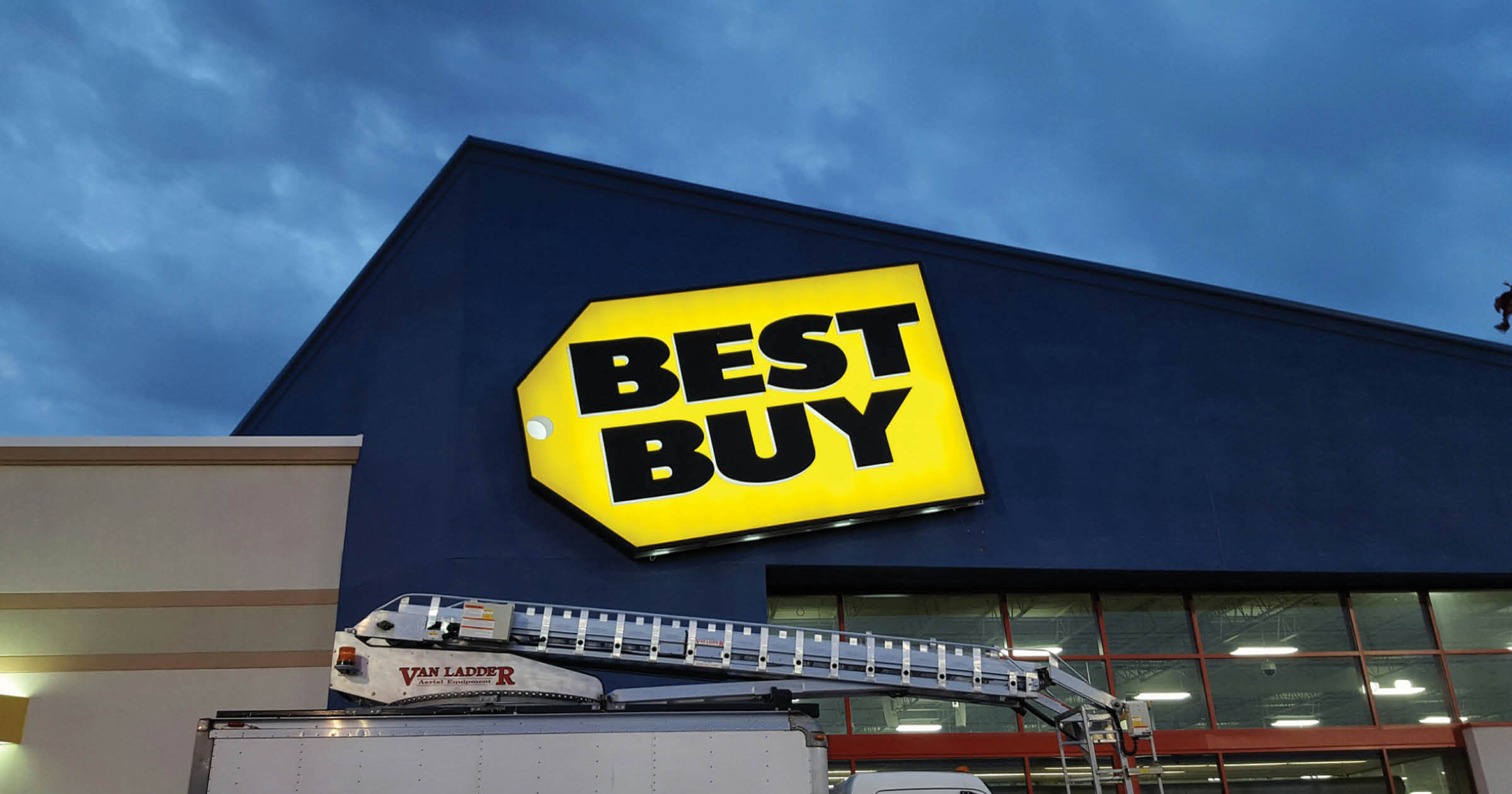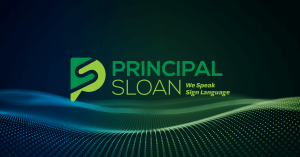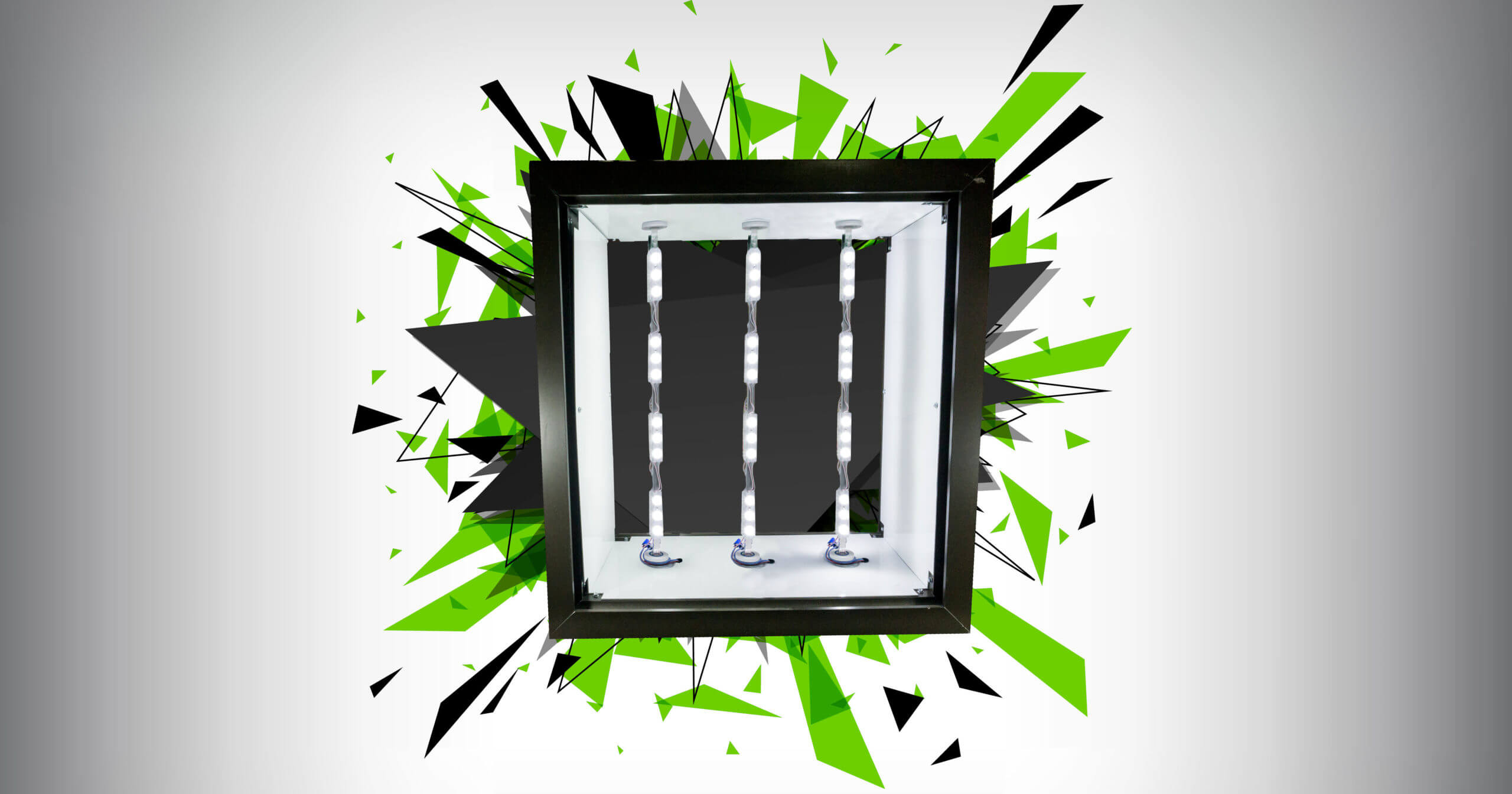When we start talking about LED sign cabinets, many of my colleagues in the LED space point back to five to seven years ago when LED modules began displacing neon as the incumbent technology for channel letters in illuminated signs. At that time, had you asked me if LEDs would be a mainstream replacement for fluorescent lamps, I would have said, “Don’t hold your breath anytime soon.”
LEDs were a natural fit for channel letters due to the significant energy savings and the fact that the signs were primarily single sided. However, that was not what really flipped the switch to LED. The change was not just technology driven, but the fact that for the first time a sign maker could hire a less-skilled, lower-paid worker to install the LEDs. Neon tube glass blowers are artists (and good ones), which costs money and time. Peeling and sticking LEDs opened the market to lower-cost channel letter fabricators who could now compete with larger companies with a room full of glass blowers.
Different Value Proposition
Sign manufacturers could also ship signs easier without as much breakage, making it easier to compete across a wider geography. While fluorescent lamps can also break, they can be easily replaced and the energy savings is less glaring, especially in double-sided sign cabinets where you have to double the number of LEDs (and the cost) due to their directional nature. So the value proposition today is different.
Seven years ago, the decision process was driven more by manufacturing and the primary “green” decision was based on greenbacks. Today, what is flipping the switch is more complicated. The first relates to “green” conservation legislation.
New Regulations Take Effect
With the Department of Energy’s energy policy and conservation act taking effect in November of 2014, most of the existing T12 ballasts and a number of T8 ballasts will no longer be available. These new efficiency requirements, coupled with stricter building regulations, will continue to drive the sign market to more efficient T8, LED, and dimming/control systems. The new DOE 2014 Ballast Rule requires higher efficiency in many of today’s linear fluorescent ballasts. The Ballast Luminous Efficiency (BLE) metric, which went into effect last November, bans the domestic manufacture and importation of products that don’t meet the new standards. Many products already do comply, but some do not. This change is now forcing end users and sign makers to consider lighting changes.
The second part of the decision is more subtle. End users are more familiar with LEDs that they were seven years ago and the technology has proven itself as a viable long-term illumination source for signs. Let’s just say that the “fear factor” is gone and we have entered full bore into the green manufacturing era. They have also seen the lower ongoing service calls with their LED channel letters. Since T-12s are often in larger signs that require a lift, etc., many end users are looking to save money by reducing the number of service calls. Real or perceived, their point of reference is LED channel letters.
The other subtlety is seen in changings costs. Permitting, installation, as well as other material costs to manufacture signs have increased, and at the same time the illumination source costs have decreased. In addition, cabinet signs are inherently larger and generally more expensive to install. The point is that lighting as a percent of the overall job cost is smaller in sign cabinets; therefore, end users may choose to pay the incremental cost to jump directly to a more energy efficient form of illumination faster versus waiting.
Viable Options
So with T-12 technology being phased out, sign makers are left with two or three viable options. The first option is new long-life fluorescents, which can offer similar efficiencies and lifetimes as LEDs at a significantly lower price. Although they still contain mercury and have reduced output in cold weather, they are much improved over their T-12 predecessors. Voltarc has released a very long-life and cost-effective T8 replacement for T12 lamps in sign cabinets. These lamps are a good option for sign cabinets, especially those smaller, easier to service installations where maintenance costs are lower and up-front cost is a primary consideration.
The second option is induction lighting. Induction lighting is a viable replacement for retrofitting existing HID lamps and large new construction signs and awnings. While 70-85 LM/W is less efficient than LEDs, they still offer a 35% energy savings over existing HID systems with an extended life. Fulham currently manufactures a beBright Induction Sign Lighter product, distributed by N. Glantz & Sons, that is rated to last an estimated 100,000 hours and can exceed more than 34,000 lumens at 400W.
N. Glantz sells the lamps in a plug-and-play option that is integrated with the ballast as a kit and costs less than buying individual units and assembling in house. All electrical components come pre-wired into an integrated wiring compartment, and contain a pre-formed perforated metal diffuser panel that virtually eliminates hot spots on the sign face. Minimum recommended sign cabinet depth is 30”.
The last option of course is LEDs. In my mind LED is and will continue to be the workhorse and default option for future sign cabinet illumination over the next 10 years. I say this because of the flexibility of manufacturing and range of options for varying sizes and depths that LED manufacturers offer. LED manufacturers regularly offer systems that exceed 100LM/W and the fact that LEDs do not “burn out” but dim slowly is appealing to end users. LEDs should also continue to work down the cost curve faster than other forms of energy-efficient lighting. So what is out there in terms of LED cabinet products?
What’s Changed?
Not much has changed in terms of the general product categories since I wrote one of my first LED cabinet sign articles, with one exception—the release of LED systems that fit directly into existing T-12 sockets, making for easier retrofits. Today we can think of it in four general categories:
1) High Output Modules on a custom railing or stock extrusion (Ventex Venbrite, GE PowerMax, ILT Rail system, AgiLight Box Rayz, Principal LED Element Flex, Various peel & stick modules)
- Advantages: Flexibility in new construction signs, can vary center spacing for the specific application, lower material cost.
- Drawbacks: Assembly (cutting, etc.) is required for on-site retrofits, additional wiring and assembly in the shop, more labor for the sign maker.
2) Return Mount LED systems (GE TetraEdge Strip, Sloan Poster Box, Principal Fusion Pod)
- Advantages: No need to baffle the sign for smaller double sided signs, easy to install.
- Drawbacks: Work in limited sizes and depths, requires more testing prior to install.
3) LED Cabinet “Systems” (U.S. LED Tandem 2, Sloan Sign Box II, Bitro Lattice)
- Advantages: Specific install instructions, designed to work on specific centers and spacing without additional testing, less assembly labor.
- Drawbacks: Assembly (cutting, etc.) is still required for on-site retrofits, may have depth and spacing limitations depending on the system
4) LED “Lamps” or systems that fit into existing sockets (GE LineFit, Principal LED Qwik Stik, Permlight Linearray)
- Advantages: No assembly required, fit into existing T-12 sockets, work on standard T-12 spacing, easiest to retrofit, and lowest labor.
- Drawbacks: Less flexibility for custom signs, more expensive than HO modules.
As you can see there is no one standard for LED cabinet offerings. The upside is that there are a plethora of tools tailored to just about any sign maker’s needs. The downside is that sign companies need to do more research before deciding which product will be suited for any given cabinet project.
The fact remains that T-12s are going away, so whether you use long-life T-8, induction lamps, or one of the many LED options, all of these technologies have their benefits and limitations. The application, sign size, cost constraints, ease of maintenance of the sign, and customer goals are all considerations when choosing the right illumination product for your future sign cabinet jobs.
General Summary* of the Energy Policy & Conservation Act
Coverage
Fluorescent ballasts must:
- Operate at a nominal input voltage at or between 120V to 277V.
- Operate at input current frequency of 60Hz (to the ballast).
- Operate the designated miniature bi-pin, medium bi-pin, single pin, and RDC (recessed double contact) based fluorescent lamp types.
Requirements
- Non-residential ballasts: Power Factor >0.90
- Residential ballasts: Power Factor >0.50
- Residential ballasts: Meet FCC 47 CFR part 18 and designed, labeled and marketed only for use in residential applications.
- Sign ballasts: Meet UL Type 2 rating and designed, labeled and marketed for use in outdoor signs.
- All ballasts: Must meet Ballast Luminous Efficiency (BLE) metric standard.
* See Department of Energy website for complete details (https://www.energy.gov/). Summary data courtesy of Universal Lighting Technologies, Inc.
This article was published in Sign & Digital Graphics magazine on April 13, 2015.



